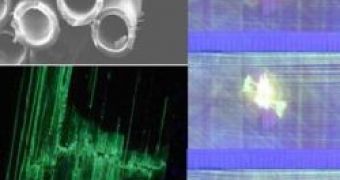Every engineer's dream is to design and build a product capable of self-repairing, but this is not yet possible, nanotechnology being the only one which could lead to such a performance.
However, until then, researchers have come up with an ingenious idea which will be applied to spaceships. The goal is to prevent structural wear due to extreme temperature variations and impact of micro-meteorites traveling at high-speeds.
The solution is inspired by one of the mechanisms used by the human body for healing: blood clotting.
"When we cut ourselves we don't have to glue ourselves back together, instead we have a self-healing mechanism. Our blood hardens to form a protective seal for new skin to form underneath," says Dr Christopher Semprimoschnig, a materials scientist at ESA's European Space Technology Research Centre (ESTEC) in the Netherlands.
The team led by Semprimoschnig attempted to simulate this process and replaced a small percentage of the fibers running through a resinous composite material, similar to that used to make spacecraft components, with hollow fibers containing adhesive materials.
"When damage occurs, the fibers must break easily otherwise they cannot release the liquids to fill the cracks and perform the repair," says Semprimoschnig.
Thanks to this innovation, space explorers can now dream at much longer missions than those which are currently carried out. In addition, maintenance costs will be much lower, and lifespan will be increased substantially.
Unfortunately, the technology is still in the incipient stage and supplementary tests are necessary to check its efficiency.
"We have taken the first step but there is at least a decade to go before this technology finds its way onto a spacecraft," Dr Christopher Semprimoschnig declared.

 14 DAY TRIAL //
14 DAY TRIAL //